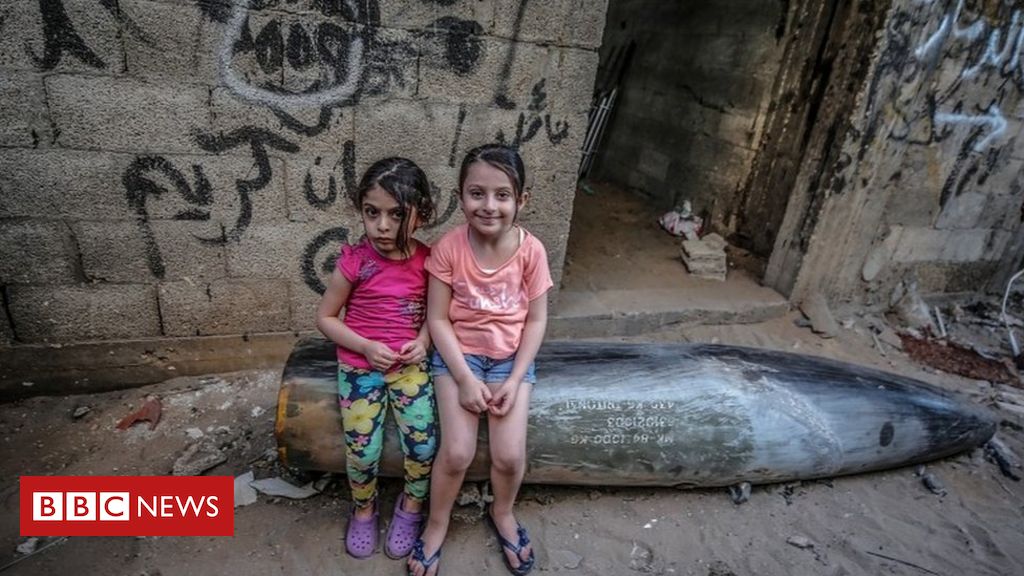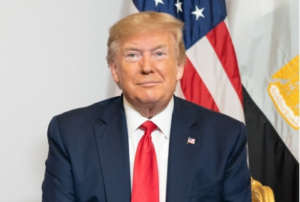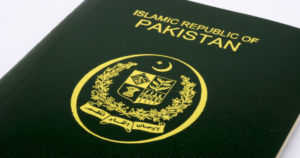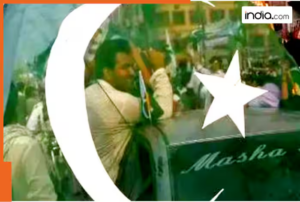
The worst violence in years between Israel and the Palestinian territory of the Gaza Strip has seen dozens killed. It follows a month of spiralling tensions before open conflict broke out. Here is what happened in the lead-up to the fighting.
Image caption Israeli police officers detain a young Palestinian man at the Damascus Gate Image copyright by Getty Images Clashes erupt in East Jerusalem between Palestinians and Israeli police. Palestinians are angry over barriers which had been placed outside the Damascus Gate entrance to the Jerusalem‘s Old City preventing them from gathering there after prayers at the Old City’s al-Aqsa Mosque on what is the first night of the Islamic holy month of Ramadan. Palestinian discontent had been stoked earlier in the day when President Mahmoud Abbas called off planned elections, implicitly blaming Israel over voting arrangements for Palestinians in East Jerusalem. Hamas – Mr Abbas’ Islamist rivals who control Gaza and were running in the elections – react angrily to the postponement. Violence around Damascus Gate and elsewhere in East Jerusalem continues nightly.
Rockets are fired from Gaza at Israel, which responds with air strikes after a relative period of calm between Israel and the Palestinian enclave.
Clashes spread to the mixed Arab-Jewish port city of Jaffa, next to Tel Aviv.
In Jerusalem, Jewish youths, angry over a spate of filmed assaults by Palestinians on Orthodox Jews posted on the TikTok video-sharing app, attack Arabs and chant anti-Arab slogans.
Image caption Israeli security forces clash with Palestinians outside the Damascus Gate Image copyright by Getty Images Hundreds of ultra-nationalist Jews shouting “Death to Arabs” march towards Damascus Gate in protest at the Arab assaults on Jews. Clashes erupt at the site between Palestinians and police trying to separate the two groups, injuring dozens of people. Violence between Arabs and Jews spreads to other parts of the city.
Militants fire dozens of rockets at Israel from Gaza, drawing retaliatory air strikes.
President Abbas’ Fatah faction and Hamas condemn the looming threatened eviction of Palestinian families from their homes in the Sheikh Jarrah district of East Jerusalem by Jewish settlers ahead of a planned court hearing. Hamas calls on Arabs to form “human shields of resistance” there. In the days that follow, police and protesters repeatedly clash at the site as it becomes a focal point for Palestinian anger.
Militants in Gaza begin sending incendiary balloons into Israel over successive days, causing dozens of fires.
Two Palestinian gunmen are shot dead and a third is wounded after opening fire on Israeli security forces in the northern West Bank. Israeli authorities say the group planned to carry out a “major attack” in Israel. Image caption The al-Aqsa mosque has been a frequent flashpoint for violence Image copyright by Getty Images Later on after Friday prayers – the last of Ramadan – major clashes erupt at the al-Aqsa mosque compound, injuring more than 200 people. Israel’s police force says it used “riot dispersal means”, firing rubber bullets and stun grenades after officers came under a hail of stones and bottles.
A second night of violence erupts in East Jerusalem after tens of thousands of worshippers prayed at the al-Aqsa mosque for Laylat al-Qadr, the holiest night of Ramadan. Police and protesters clash at Damascus Gate, with police using water cannon, rubber bullets and tear gas against crowds of Palestinians, some throwing stones. More than 120 Palestinians and some 17 police are injured.
Israel’s Supreme Court postpones the hearing on the Sheikh Jarrah case following calls to delay it because of the growing unrest. Tensions remain high though and more clashes take place between Israeli police and Palestinians in Sheikh Jarrah and at Damascus Gate.








